Tender Slow Roasted Lamb Neck with Yellow Rice
We may earn a commission from recommended products, at no extra cost to you. See Disclosure.
INGREDIENTS
Lamb:
- 1 lamb neck
- 2 tablespoon coarse salt
- 1 tablespoon black pepper
- ¼ cup honey
Rice:
- 2 cups basmati rice
- 3 cups water
- ¼ cup oil
- 1 tablespoon salt
- 1 teaspoon turmeric
Toppings:
- ½ bunch cilantro, chopped
- 1 green chili, seeds removed and sliced
INSTRUCTIONS
Lamb:
- Preheat the oven to 390°F (200°C).
- Rub the meat thoroughly on all sides with honey, salt, and pepper. Wrap it in three layers of parchment paper and two layers of aluminum foil. Place it in a baking pan and bake for 40 minutes.
- Lower the temperature to 250°F (120°C) and cook for 4 and a half hours.
Rice:
- In a small pot, fry the rice for about a minute.
- Add water, cover with a lid, and cook over low heat for approximately 20 minutes.
- Turn off the heat and leave the lid closed for 10 minutes.
- Mix the rice with the meat, a handful of chopped cilantro, and sliced green chili.
MY NOTES
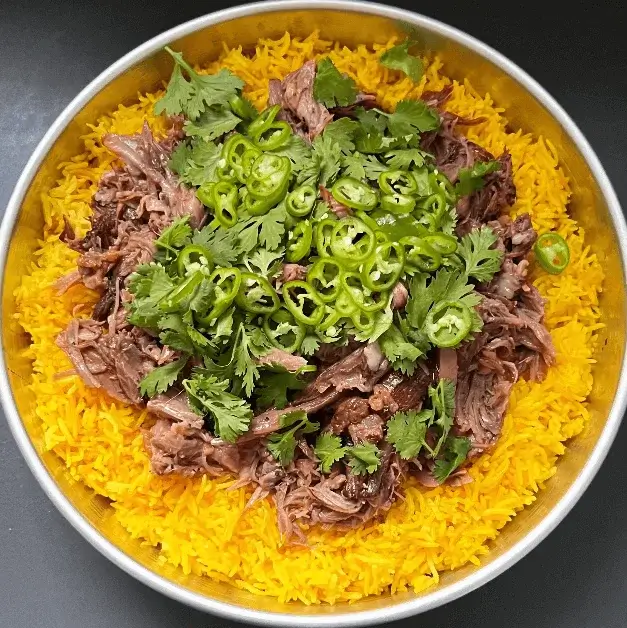
FAQ
Is lamb neck good to eat?
Lamb neck is an often overlooked, yet incredibly flavorful and tender cut of meat. When prepared properly, it offers a rich, succulent taste that many culinary enthusiasts appreciate. Slow cooking, braising, or roasting lamb neck can result in a melt-in-your-mouth experience, making it a hidden gem for those who enjoy indulgent, well seasoned dishes. While it may have more connective tissue, the effort is well worth the reward in terms of taste and texture, making lamb neck a delectable choice for those willing to explore beyond the traditional cuts.
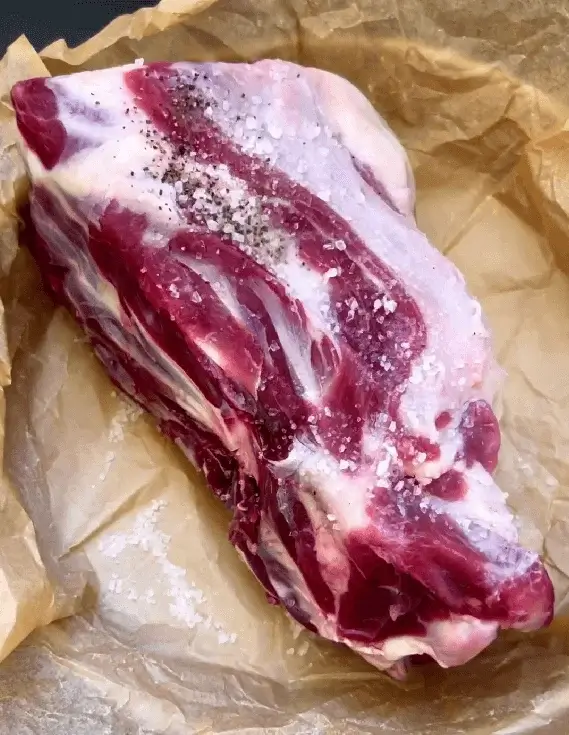
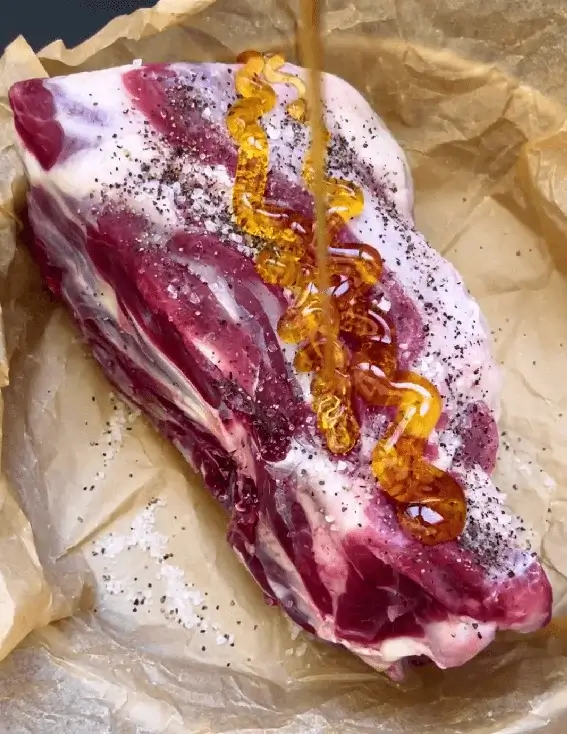
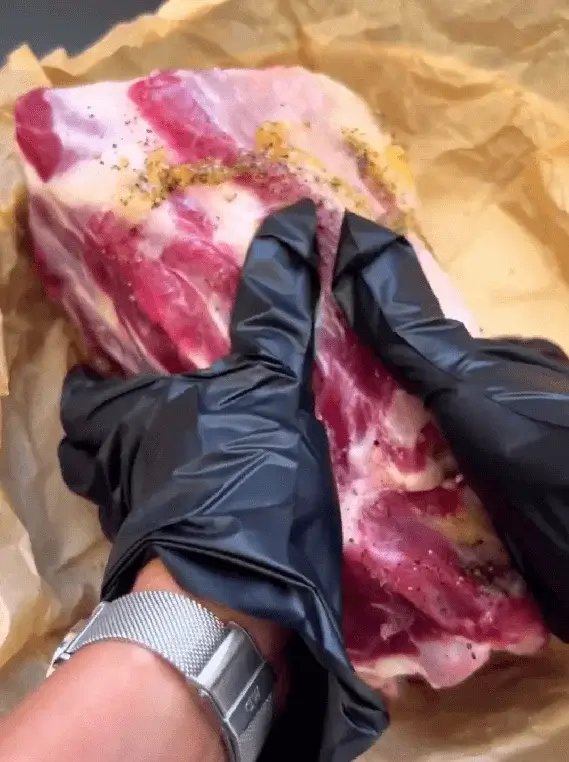
Can I substitute honey in this slow roasted lamb neck recipe?
Maple syrup, agave nectar, date syrup, or molasses can replace honey, offering unique flavors.
Does lamb get more tender the longer you cook it?
Yes, lamb does tend to become more tender the longer it is cooked, especially when subjected to slow, low temperature cooking methods like roasting, braising, or stewing. These techniques break down the collagen and connective tissues in the meat, resulting in a gradual softening and increased tenderness.
This slow cooking allows the flavors to develop and infuse the meat, resulting in a succulent and delectably tender texture that’s often preferred when preparing dishes like slow roasted lamb or hearty stews. Properly executed, longer cooking times can enhance the quality of your lamb dish.

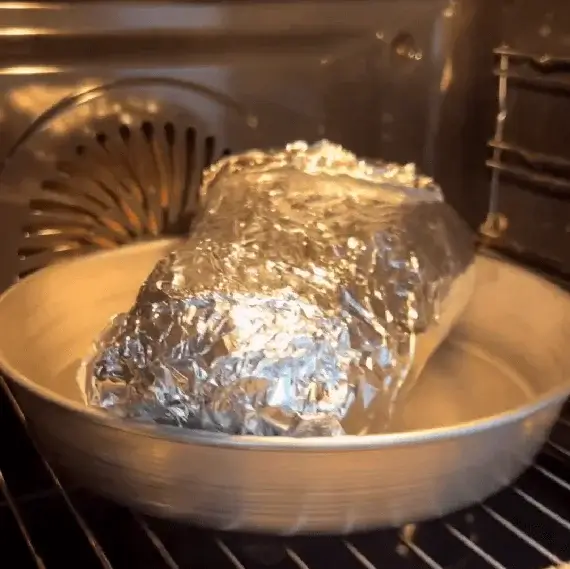
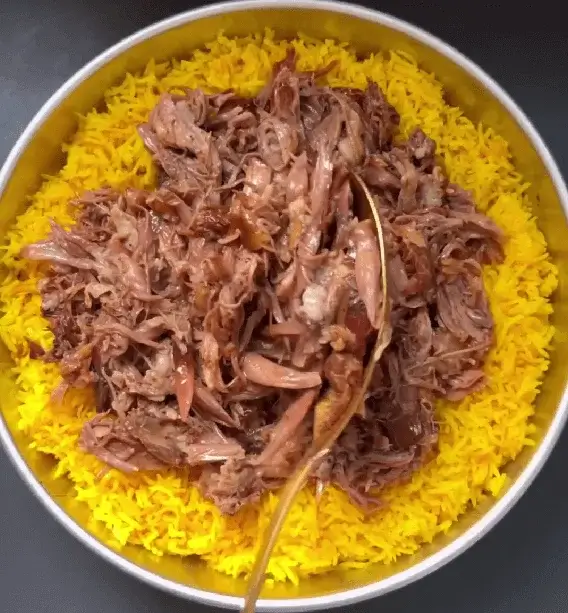
Using parchment paper and aluminum foil for slow cooked lamb neck
Parchment paper prevents food from sticking to the pan or baking dish, making it easy to remove the lamb and rice without leaving a mess behind. It also helps with even cooking and prevents direct contact with the aluminum foil, which is essential when cooking acidic or potentially reactive ingredients. On the other hand, aluminum foil is excellent for sealing in flavors and moisture, creating a kind of pocket that locks in the aromas and juices, resulting in a more flavorful and succulent dish. The combination of both ensures your lamb and rice cook to perfection while maintaining their integrity and flavors.

